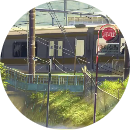Học tại trường
Chưa có thông tin
Đến từ
Chưa có thông tin , Chưa có thông tin
Số lượng câu hỏi
284
Số lượng câu trả lời
29
Điểm GP
0
Điểm SP
5
Người theo dõi (2)
Đang theo dõi (0)

Chủ đề:
Luyện tập tổng hợpCâu hỏi:
Use the correct form of the word in brackets to complete each sentence.
36. I was late because I …………………………….how much time I’ll need. ESTIMATE
37. I consider it most …………………………….when they insist on talking religion with you
as if you were a common person. OBJECT
38. It is …………………………….that a man in such a powerful position could act so
unwisely. CONCEIVE
39. Psychologists say that adults should not accept ……………………………. behavior from
their children. PERMIT
40. He promised to come but he’s very …………………………….. RELY
41. He felt very …………………………….when he saw he had failed the exam again. COURAGE
42. The …………………………….of trains and the buses causes frustration and annoyance. FREQUENT
43. Children who grow up in time of war are more likely to be …………………………….
than others. ADJUST
44. John turned up on the wrong day because of a …………………………….. UNDERSTAND
45. Without his teacher’s …………………………….he would have given up long ago. ENCOURAGE


Chủ đề:
Luyện tập tổng hợpCâu hỏi:
0. Please don’t tell anyone about this for the time being. (SOONER)
I……………………………………………………………………………………..
0. The amount we’ve saved is very small compared to how much we own. (OCEAN)
The amount we’ve saved is ……………………………………………………………
0. The number of violent crimes around here has risen drammatically recently. (SHARP)
There ………………………………………………………………………………….
1. Please don’t tell anyone but I’m handing in my resignation this afternoon.(HAT)
You’d …………………………………………………………………………………
2. There are going a few changes around here; do you see what I mean, Tim? (DRIFT)
There are…………………………………………………………………………
3. Actually I wanted to be a politician when I was younger, but then I changed my mind. (HAPPEN)
I wanted to be ……………………………………………………………………….
4. I think you misunderstood, Kevin. (STICK)
I think you must ……………………………………………………………………
5. I didn’t get home late so Dad wasn’t upset with me. (BOOKS)
I………………………………………………………………………………………



Chủ đề:
Luyện tập tổng hợpCâu hỏi:
. ~ Ann: “______” ~ Becca: "What's so special about it?"
A. We missed the film at the Odeon’s last night B. She kept her secret marriage from us all.
C. How about going to the Space Museum? D. Mass media are filled with stories of his resign.
GIẢI THÍCH GIÚP EM NỮA NHÉ





